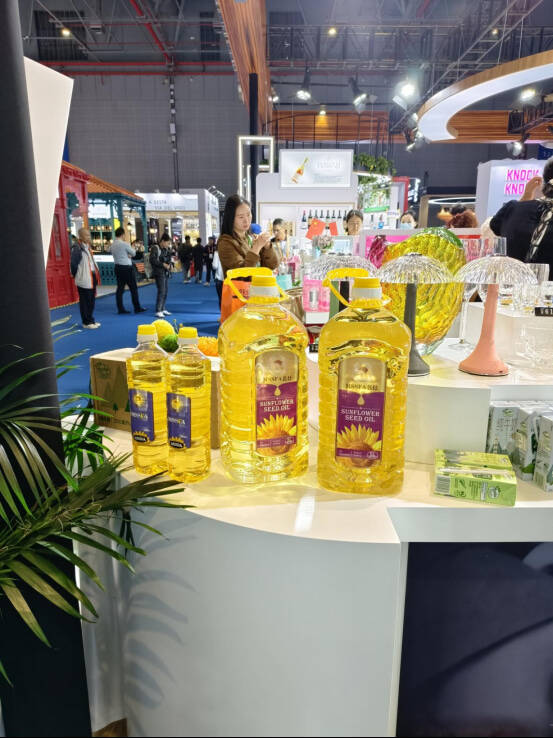Mastering High-Temperature Cooking with Sunflower Oil
Sunflower oil has emerged as a versatile cooking oil that excels in high-temperature cooking applications. With its high smoke point of approximately 450°F (232°C), sunflower oil maintains stability even under intense heat, making it an excellent choice for various cooking methods. Understanding how to properly utilize this golden liquid can elevate your culinary creations while ensuring optimal nutrition and safety in the kitchen.
Modern cooking enthusiasts and professional chefs alike appreciate sunflower oil for its neutral taste profile and impressive heat tolerance. Whether you're searing a perfectly marbled steak or creating crispy stir-fries, mastering the use of sunflower oil at high temperatures can transform your cooking experience.
Understanding Sunflower Oil Properties
Chemical Composition and Stability
Sunflower oil consists primarily of polyunsaturated fatty acids, particularly linoleic acid, along with monounsaturated fats and a small percentage of saturated fats. This unique composition contributes to its stability at high temperatures. The oil contains natural antioxidants, including Vitamin E, which help prevent oxidation during heating.
When exposed to heat, sunflower oil maintains its molecular structure better than many other cooking oils, reducing the formation of harmful compounds. This stability makes it particularly suitable for high-temperature cooking methods while preserving its nutritional benefits.
Smoke Point and Heat Resistance
The impressive smoke point of sunflower oil sets it apart from many other cooking oils. This high threshold means you can heat the oil to considerable temperatures before it begins to break down and smoke. The stability at high temperatures prevents the formation of toxic compounds and maintains the oil's integrity throughout the cooking process.
Regular sunflower oil typically has a higher smoke point than its cold-pressed counterpart, making refined versions more suitable for high-heat cooking applications. Understanding these properties helps in selecting the right type of sunflower oil for specific cooking methods.
Optimal Cooking Methods
Deep Frying Techniques
When deep frying with sunflower oil, maintain a temperature between 350-375°F (175-190°C) for optimal results. This range allows food to cook evenly while developing a crispy exterior without excessive oil absorption. Always use a thermometer to monitor oil temperature and avoid overheating.
For best results, filter the sunflower oil after each use and store it properly. The oil can be reused several times when maintained correctly, making it an economical choice for deep frying. Watch for signs of degradation such as darkening or unusual odors, which indicate it's time to replace the oil.
Stir-Frying and Sautéing
Sunflower oil's high smoke point makes it perfect for stir-frying and sautéing at high temperatures. These cooking methods require quick heat transfer and minimal oil breakdown. When stir-frying, heat the wok or pan until it's very hot before adding the oil, then add ingredients quickly to maintain temperature.
For sautéing, use moderate amounts of sunflower oil and maintain medium-high to high heat. The oil's neutral flavor allows the natural taste of ingredients to shine through while providing excellent heat distribution for even cooking.
Safety and Best Practices
Temperature Control Measures
Maintaining proper temperature control is crucial when cooking with sunflower oil at high temperatures. Use a reliable kitchen thermometer to monitor oil temperature and avoid exceeding the smoke point. Sudden temperature fluctuations can affect both food quality and safety.
When heating sunflower oil, look for signs that indicate optimal cooking temperature, such as slight rippling on the surface. Never leave heating oil unattended, and always have appropriate fire safety equipment nearby as a precaution.
Storage and Handling Guidelines
Proper storage of sunflower oil significantly impacts its performance in high-temperature cooking. Store the oil in a cool, dark place away from direct sunlight and heat sources. An airtight container helps prevent oxidation and maintains oil quality.
Monitor the oil's shelf life and always check for signs of rancidity before use. While sunflower oil is generally stable, improper storage can lead to degradation and affect its high-temperature cooking properties.
Common Mistakes to Avoid
Temperature Management Errors
One frequent mistake is heating sunflower oil beyond its smoke point, which can lead to the release of harmful compounds and affect food taste. Always preheat the oil gradually and maintain consistent temperature throughout cooking.
Another common error is adding too much food to the oil at once, which causes temperature drops and uneven cooking. Work in small batches to maintain optimal oil temperature and ensure consistent results.
Quality and Maintenance Issues
Using old or improperly stored sunflower oil can compromise both safety and flavor. Regularly inspect oil quality and replace it when necessary. Avoid mixing new oil with used oil, as this can accelerate degradation.
Neglecting to filter and properly store used oil can lead to faster deterioration and affect future cooking results. Implement a regular maintenance routine for oil used in high-temperature cooking.
Frequently Asked Questions
How long can I reuse sunflower oil for high-temperature cooking?
Sunflower oil can typically be reused 3-4 times for high-temperature cooking, provided it's properly filtered and stored after each use. Always check for signs of degradation such as darkening, unusual odors, or smoking at lower temperatures before reusing.
What's the best way to dispose of used sunflower oil?
Never pour used sunflower oil down the drain. Allow it to cool completely, then transfer it to a sealed container and dispose of it through your local recycling center or waste management facility that accepts cooking oil. Some communities have specific cooking oil recycling programs.
Can I mix sunflower oil with other oils for high-temperature cooking?
While it's possible to mix sunflower oil with other high smoke point oils, it's generally recommended to use it alone for consistent results. Different oils have varying smoke points and chemical properties, which can affect cooking performance and food quality when mixed.

 EN
EN
 DA
DA
 AR
AR
 NL
NL
 FI
FI
 FR
FR
 DE
DE
 EL
EL
 HI
HI
 IT
IT
 JA
JA
 KO
KO
 NO
NO
 PL
PL
 PT
PT
 RU
RU
 ES
ES
 SV
SV
 TL
TL
 ID
ID
 SR
SR
 UK
UK
 VI
VI
 HU
HU
 TH
TH
 TR
TR
 FA
FA
 AF
AF
 MS
MS
 GA
GA
 MK
MK
 HY
HY
 KA
KA
 BN
BN
 LA
LA
 MN
MN
 NE
NE
 MY
MY
 KK
KK
 UZ
UZ
